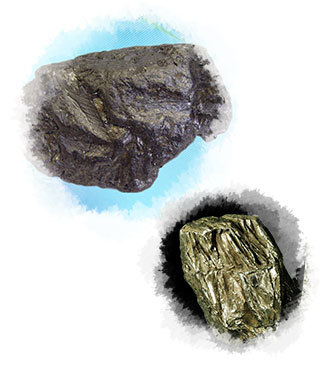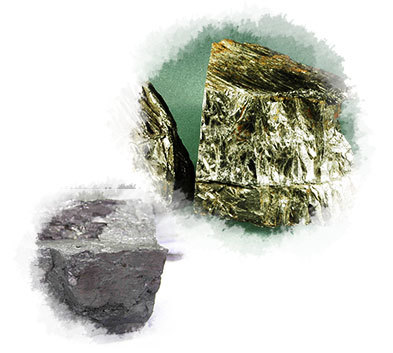|

|
|
Distribution of origin
Genesis and Appearance: Graphite is formed at high temperatures. The most widely distributed metamorphic deposits of graphite are derived from regional metamorphism of sedimentary rocks rich in organic matter or carbonaceous rocks
China: Laixi City, Shandong Province, one of China's major producing areas of graphite, graphite proved reserves of 6.8711 million tons, is to retain reserves of 6.3993 million tons. In addition, Panshi City, Jilin Province is also one of the origin of graphite, graphite reserves of 5 million tons.
World: Well-known origin: New York, Madagascar and, China's Heilongjiang Province Jixi City Hengshan District Liu Mao as the largest producer.
The industry is divided into crystalline graphite ore (flake graphite ore) and stable crystalline (earthy) graphite ore in two categories. Crystalline graphite ore can be divided into two kinds of flake and dense. China in crystalline flake graphite ore types, followed by stable crystalline type, dense crystalline graphite is found only in Xinjiang's individual deposit in Amsterdam, industry of little value.
Scale graphite ore crystal is better, crystal particle size is greater than 1 m, generally 0.05 ~ 1.5mm, the large amount of up to 5 ~ 10mm, more than a collection of. Ore grade is low, generally 3 ~ 13.5%. Associated minerals are quartz, feldspar, mica, tremolite, diopside, calcite, pyrite, garnet and small, sometimes accompanied by rutile, vanadium mica and other useful components. According to the occurrence of graphite ore rocks of different lithology, divided gneiss schist type, type, type, through the eclogite granulite rock type and mixed type, marble and granite type seven kinds, six kinds of ore produced in the regional metamorphic deposits, after a hydrothermal ore type is produced Yu Yanjiang deposit.
Stable crystalline graphite ore is microcrystalline aggregates, particle size less than 1 m, and its shape can be observed only in the electron microscope. The ore was black, steel gray, general luster dim, with dense massive, earthy and layered, lamellar structure. The process performance of the hidden crystal graphite is not as good as the flake graphite, the industry application scope is also small, the ore grade is generally higher, but the ore is poor. Mineral composition is mainly associated with graphite, andalusite, hydromica, sericite and a small amount of pyrite, limonite, tourmaline and calcite etc.. Grade is generally 60 ~ 80%, ash is 15 ~ 22%, volatile is divided into 1 ~ 2%, the moisture is 2 ~ 7%.
|



